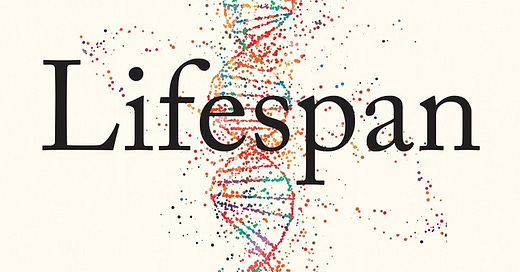Lifespan: Why We Age—and Why We Don't Have To by Harvard geneticist David Sinclair presents a revolutionary perspective on aging. Sinclair argues that aging should be classified as a disease—one that can potentially be treated and even reversed through emerging scientific breakthroughs.
The book begins with Sinclair's personal story. Growing up in Australia, he watched his grandmother's health deteriorate, sparking his lifelong mission to understand why bodies break down over time. After moving to MIT to work with Leonard Guarente, Sinclair made a groundbreaking discovery about sirtuins—proteins that regulate cellular health and are activated during times of biological stress.
Sinclair introduces the "Information Theory of Aging," which posits that aging results from the loss of epigenetic information—essentially, cells forgetting which genes they should express. He compares this to a DVD becoming scratched; the genetic information remains intact, but the system can't properly read the instructions. Sinclair illustrates this concept through an experiment where his team aged mice prematurely by damaging their epigenome, then remarkably reversed this damage, restoring their youthful features.
The book details several "longevity molecules" that show promise in slowing or reversing aging. Resveratrol, found in red wine, activates sirtuins. NMN (nicotinamide mononucleotide) boosts levels of NAD+, a molecule critical for cellular energy that declines with age. Sinclair describes giving his 70-something father NMN supplements, after which the elder Sinclair reportedly regained energy, grew new hair, and now hikes mountains and dates women decades younger—a personal anecdote Sinclair offers as encouraging evidence.
Sinclair practices what he preaches, following a regimen that includes intermittent fasting, avoiding certain foods, exercise, and supplements like NMN and resveratrol. He describes deliberately stressing his body through practices like exposure to cold temperatures, which activates survival circuits that improve cellular resilience—what he calls "hormesis."
Sinclair addresses concerns about overpopulation by arguing that birth rates typically decline in developed societies and that technological advances will help sustain larger populations. He contends that longer-lived humans would have greater incentive to solve long-term problems like climate change, since they would personally face the consequences of inaction.
Sinclair shares profound moments from his research journey, including when his team revitalized the optic nerves of aged mice, essentially restoring vision in animals that had gone blind from age-related degeneration. This breakthrough suggested that age-related damage might be more reversible than previously thought.
The book concludes with a vision of the future where aging is treated as a medical condition, with regular epigenetic tune-ups becoming as routine as dental cleanings. Sinclair presents a case that the first humans who might live to 150—or beyond—could already be alive today.
Get the book : USA | India | UK
Check out the previous books we’ve covered:
From Third World to First | How the World Really Works | Genghis Khan and the Making of the Modern World | Meditations | When Breath Becomes Air | Alchemy | Siddhartha | The Design of Everyday Things | A Short History of Nearly Everything | The Inevitable | Chip War | Same As Ever | What If?





Wonderful research. I'm interested in knowing how much longer a person can live.
Hope do you sure m tank this against, outlive by Dr. Peter Attic?